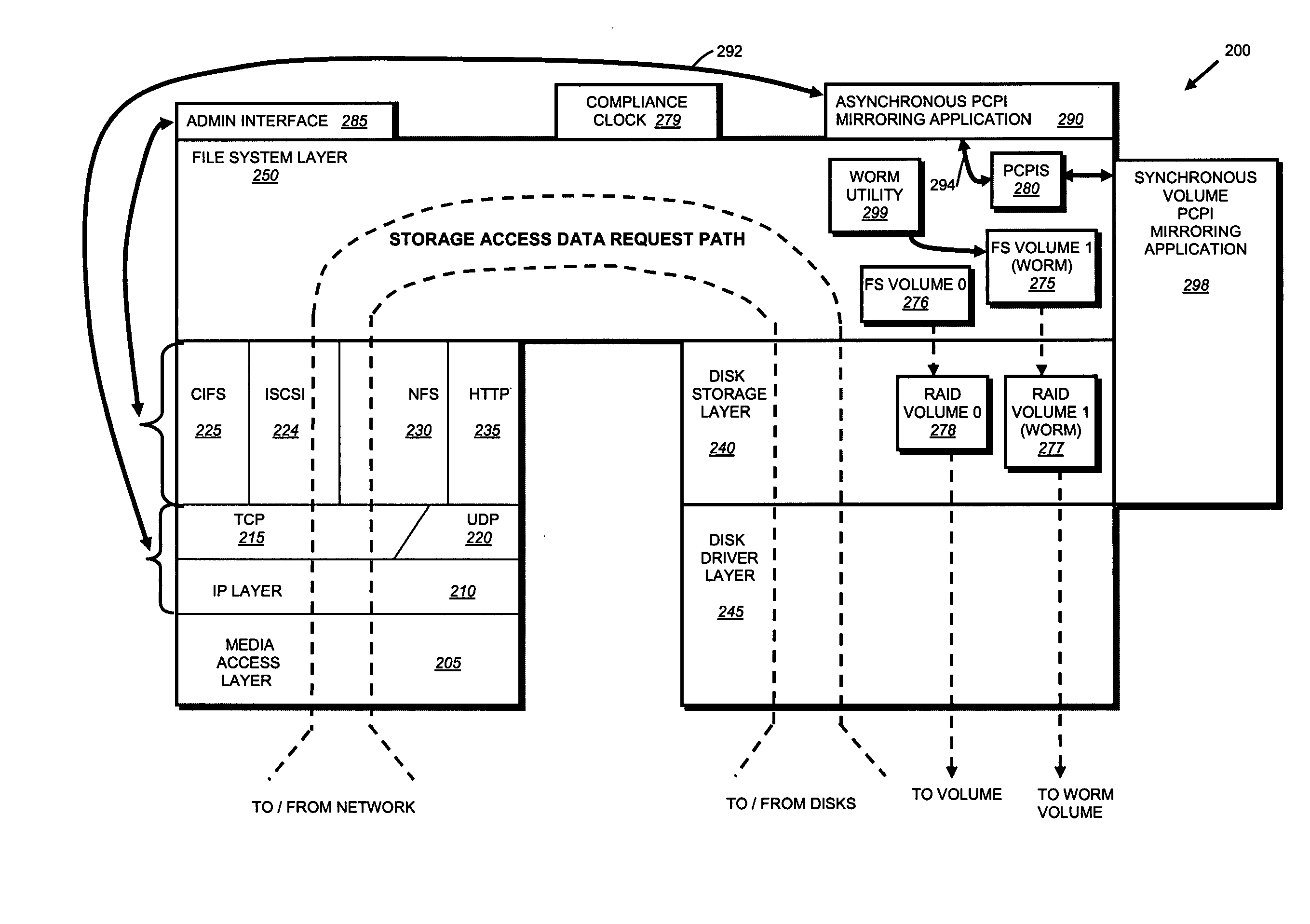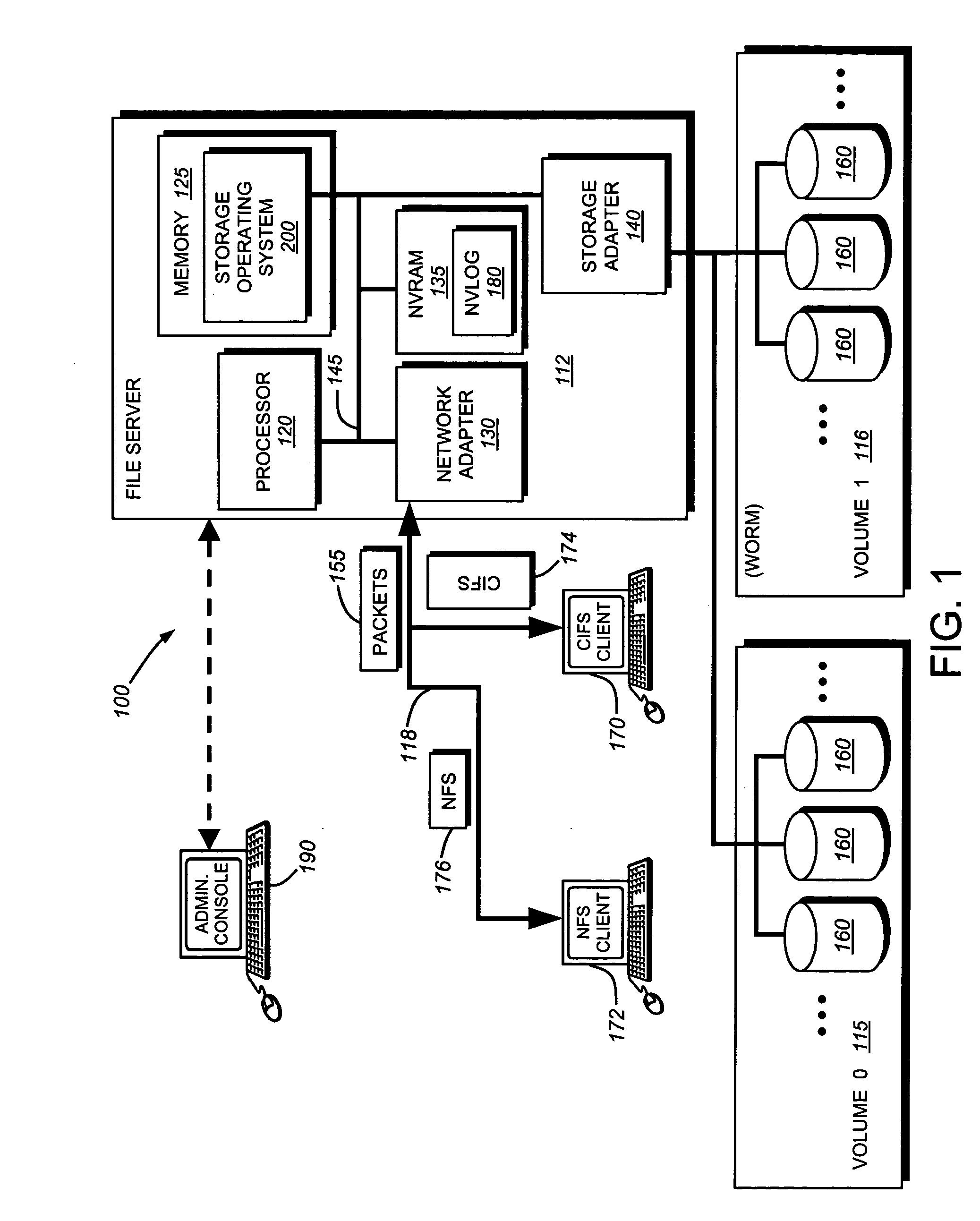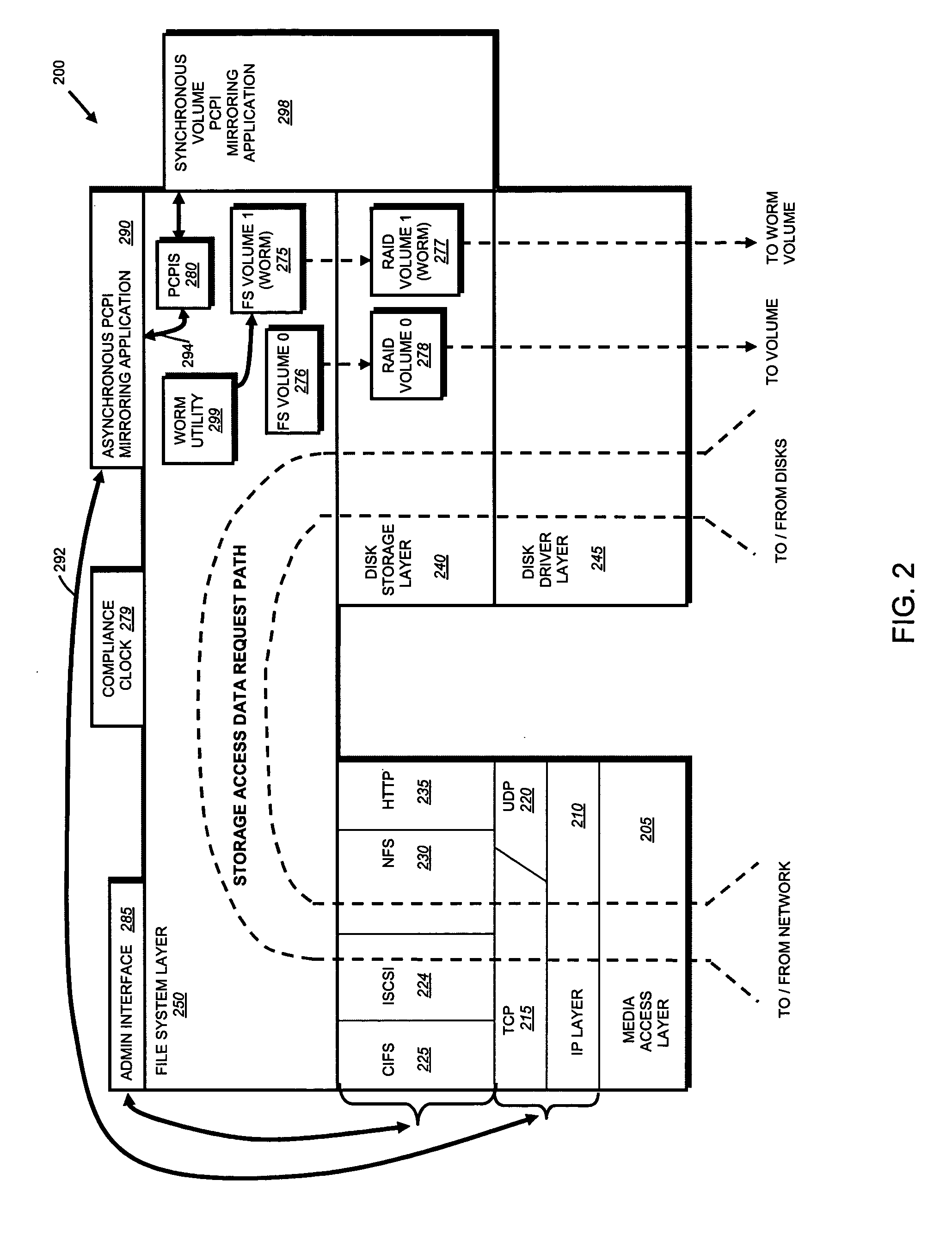System and method for record retention date in a write once read many storage system
a storage system and write once read technology, applied in the field of data storage systems, can solve the problems of affecting and significant sanctions, and achieve the effect of increasing the performance of file services
- Summary
- Abstract
- Description
- Claims
- Application Information
AI Technical Summary
Benefits of technology
Problems solved by technology
Method used
Image
Examples
Embodiment Construction
A. Network and File Server Environment
[0040] By way of further background, FIG. 1 is a schematic block diagram of a storage system environment 100 that includes a file server 112 that may be advantageously used with the present invention. For the purposes of this description, the source system is a networked computer that manages storage of one or more storage disks 160 (can't find 162 in FIG. 1).
[0041] The file server or “filer”112 manages one or more volumes 115 and 116, comprising arrays of disks 160. The filer 112 is linked to a network 118 that can comprise a local or wide area network, such as the well-known Internet. An appropriate network adapter 130 facilitates communication over the network 118. The filer 112 generally comprises a processor 120, a memory 125, a network adapter 130 and a storage adapter 140 interconnected by a system bus 145. Filer 112 also includes a storage operating system 200 (FIG. 2) that implements a file system to logically organize the information ...
PUM
 Login to View More
Login to View More Abstract
Description
Claims
Application Information
 Login to View More
Login to View More - R&D
- Intellectual Property
- Life Sciences
- Materials
- Tech Scout
- Unparalleled Data Quality
- Higher Quality Content
- 60% Fewer Hallucinations
Browse by: Latest US Patents, China's latest patents, Technical Efficacy Thesaurus, Application Domain, Technology Topic, Popular Technical Reports.
© 2025 PatSnap. All rights reserved.Legal|Privacy policy|Modern Slavery Act Transparency Statement|Sitemap|About US| Contact US: help@patsnap.com



